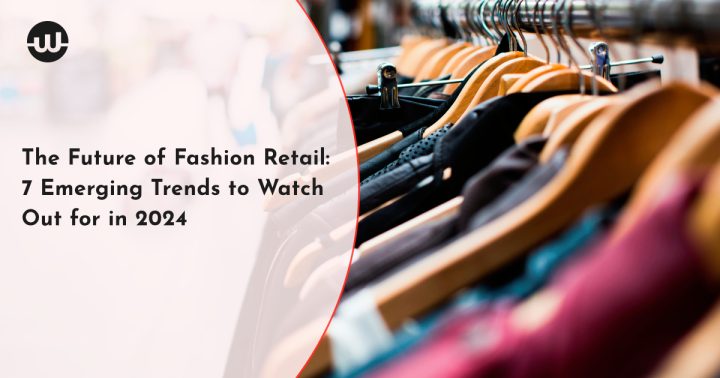2024 will see an unprecedented shift in fashion retail, driven by technological innovations, changing consumer tastes, and an intensified commitment to sustainability.
This blog post highlights seven revolutionary fashion retail trends that could significantly transform fashion retail this year. These innovations range from creative sustainable practices that could upend industry conventions to virtual shopping experiences and initiatives that may bring innovative technologies.
Read on to explore the future of fashion retail, which honors innovation and customer values while pushing the envelope beyond its conventional bounds.
Focus on Product Lifecycle Management
2024 will mark a key trend in fashion retail: increased emphasis on product lifecycle management (PLM). Apparel PLM software needs to anticipate and offer smooth optimization and integration throughout the processes of design, manufacture, and distribution. The utilization of apparel PLM software not only streamlines operations and promotes teamwork but also guarantees transparency across the product lifetime.
Moreover, sustainability is becoming more important in the fashion industry of today. As a result, using PLM software becomes even more essential for effectively managing resources, making wise decisions, and satisfying the demand for environmentally friendly practices in the fashion retail industry.
Virtual Shopping Experiences
Virtual reality (VR) and augmented reality (AR) technologies are revolutionizing conventional in-person shopping experiences, breathing new life into fashion retail. In fact, VR in the fashion market is projected to experience a compound annual growth rate of 13.4% from 2021 to 2026. This shift promises to transform how consumers engage with fashion brands by making the shopping experience more immersive, interactive, and technologically advanced.
By immersing themselves in virtual showrooms, consumers will soon be able to shop for clothing without leaving their homes. Businesses are investing heavily in apps that allow users to try on clothing virtually, experiment with alternative appearances, and receive personalized recommendations. This trend addresses fit and size irregularities and enhances the online shopping experience, which reduces the number of returns.
Blockchain for Greater Transparency and Sustainability
Blockchain technology has quickly emerged as an invaluable source of transparency and sustainability across industries, particularly fashion. Blockchain serves as a powerful weapon in fashion’s effort to become more responsible with production by reinforcing transparency, building trust, and supporting sustainable practices within production.
Artificial Intelligence (AI) in Personalized Fashion
As their businesses grow, fashion retailers are looking to AI technology as a vital asset in offering customers customized shopping experiences. To forecast and recommend items that are precisely matched to each user’s tastes, AI algorithms examine consumer data such as browsing habits, past purchases, and social media activity.
This creates customer engagement while decreasing decision fatigue and increasing conversion chances. From personalized style recommendations to virtual stylists powered by artificial intelligence, AI is revolutionizing fashion retail into an efficient customer-oriented industry.
Renting and Reselling Platforms
As our society advances towards sustainability and circular economies, the fashion sector has seen an incredible upsurge in rental and reselling platforms. By the end of 2024, consumers may adopt more environmentally friendly practices, such as renting used apparel.
This trend not only promotes an eco-friendly fashion philosophy but also allows consumers to access high-quality clothing at drastically reduced costs—further evidence that fashion industry practices adhere to ethical and economic considerations.
Immersive In-Store Experiences
As online shopping gains steam, traditional brick-and-mortar stores don’t disappear. Fashion retailers in 2024 are adapting to vibrant and engaging environments for customers, investing heavily in interactive displays, smart mirrors, and augmented reality to provide memorable shopping experiences beyond mere transactions. These technologies also enhance customer engagement by showing their commitment to meeting an ever-evolving retail landscape while creating seamless connections and journeys between offline and online shopping environments.
Introducing tech into real stores not only bridges the gap between offline and online shopping but also makes the whole shopping journey feel seamless, increasing satisfaction and engagement.
Subscription-Based Models
In the fashion business, subscription-based models have quickly taken over, giving customers a more convenient and affordable way to afford new trends. According to this model, fashion retailers are expected to significantly grow their subscription services in 2024, allowing clients to receive clothes deliveries regularly.
Not only does this meet consumers’ desire for an ever-refreshed wardrobe but it also supports sustainability goals by encouraging reuse and providing variety and flexibility when it comes to fashion choices which are further advantages offered by subscription-based models.
Final Words
Looking forward to 2024 and considering the potential transformation in fashion retailing, we find ourselves on the verge of an unprecedented era of change. The seven emerging trends, from virtual shopping experiences and sustainable practices to cutting-edge technologies like blockchain and AI, provide an intriguing snapshot of an industry in constant flux.
Brands that successfully navigate this ever-evolving fashion retail landscape with innovation and consumer demand at their core will redefine fashion retailing itself. Fashion retail offers an exhilarating journey full of dynamic changes and possibilities for creativity that could usher in an era more conducive to sustainability and consumer satisfaction.
